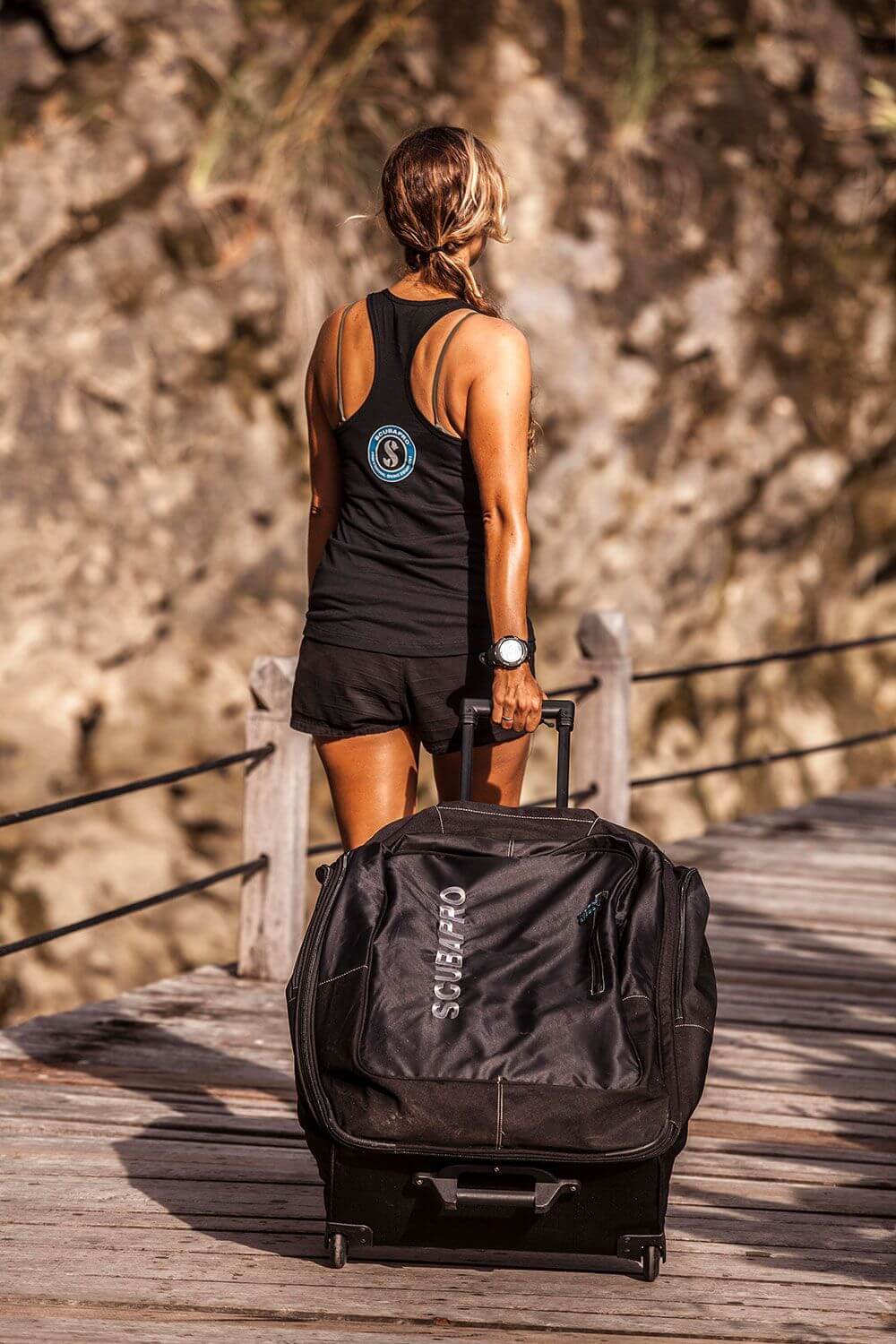Buying Your First Set of Dive Gear
Buying Your First Set of Dive Gear
A tried-and-true transition plan that will get you out of rental gear and into a rig of your own.
Written by John Brumm
You’ve completed your dive training, your instructor signed off on your check-out dive, your C-card is in the mail, and you’re feeling pretty pumped about this whole diving experience.
Now what? Easy. Get wet. Keep diving. Log as much bottom time as you can, for this is the critical period – between graduating from class and becoming a bona fide dive fanatic – where you either make giant strides toward getting more comfortable and confident under water, or the euphoria fades and you start losing interest.
But to go diving you need gear. If you don’t own gear you have to rent it. Which is okay, at first. But renting gear is a hassle, it can be pricey, and the gear you end up using is usually pretty well-worn and rarely fits right. This can quickly cause a new diver’s enthusiasm to wane. In fact, studies have shown that the surest way to lose interest in diving, beyond simply not going diving, is to have to rely on rental gear to get you into the water.
So the best thing you can do to increase your safety, comfort and confidence in the water, beyond actually going diving, is to own your own dive gear. If you can’t buy everything at once, then the next best strategy is to save up some cash and wean yourself from rental gear one piece at a time. Here’s a plan for doing that.

(Note: Most dive classes require a mask, snorkel and a pair of fins, so we’re assuming you’re already set up with these basics.)
Step 1: A Reliable Regulator System
One of the most important and life-sustaining pieces you will buy is your regulator system. This is the core of your life support system, so you will derive huge comfort in knowing that your regulator is adjusted properly, it’s up to date with its service – and that you were the last one to use it.
SCUBAPRO offers a full line of regulators to suit every conceivable diving scenario. For the budget-minded there's the time-proven MK2 EVO/R195; in the mid-range, you can choose among models like the MK11/C370 and MK17 EVO/C370; and in the upper range, there are lots of choices, from the MK19 EVO/G260 and MK25 EVO/S600, all the way up to the all-titanium MK25T/S620 X-Ti. Your SCUBAPRO authorised dealer is ready to assist you in selecting the regulator that best fits your budget and diving style.
Once you’ve got your regulator, you’ll want to hook up a back-up second stage like the R195 Octopus, or if you want to avoid the extra hose, go with the AIR2 – the original inflator/reg, CE certified as a back up for warm water. Now in its 5th generation, it is still the best back-up breather money can buy.
Finally, you need to rig up your instrument console with your preferred gauges. The instrument console usually consists of a pressure gauge and a depth gauge like our 2-Gauge Compact Console or with a compass-like our 3-Gauge In-Line Console. These will work in conjunction with, or as reliable back-up instruments to your dive computer, which is next on the list.
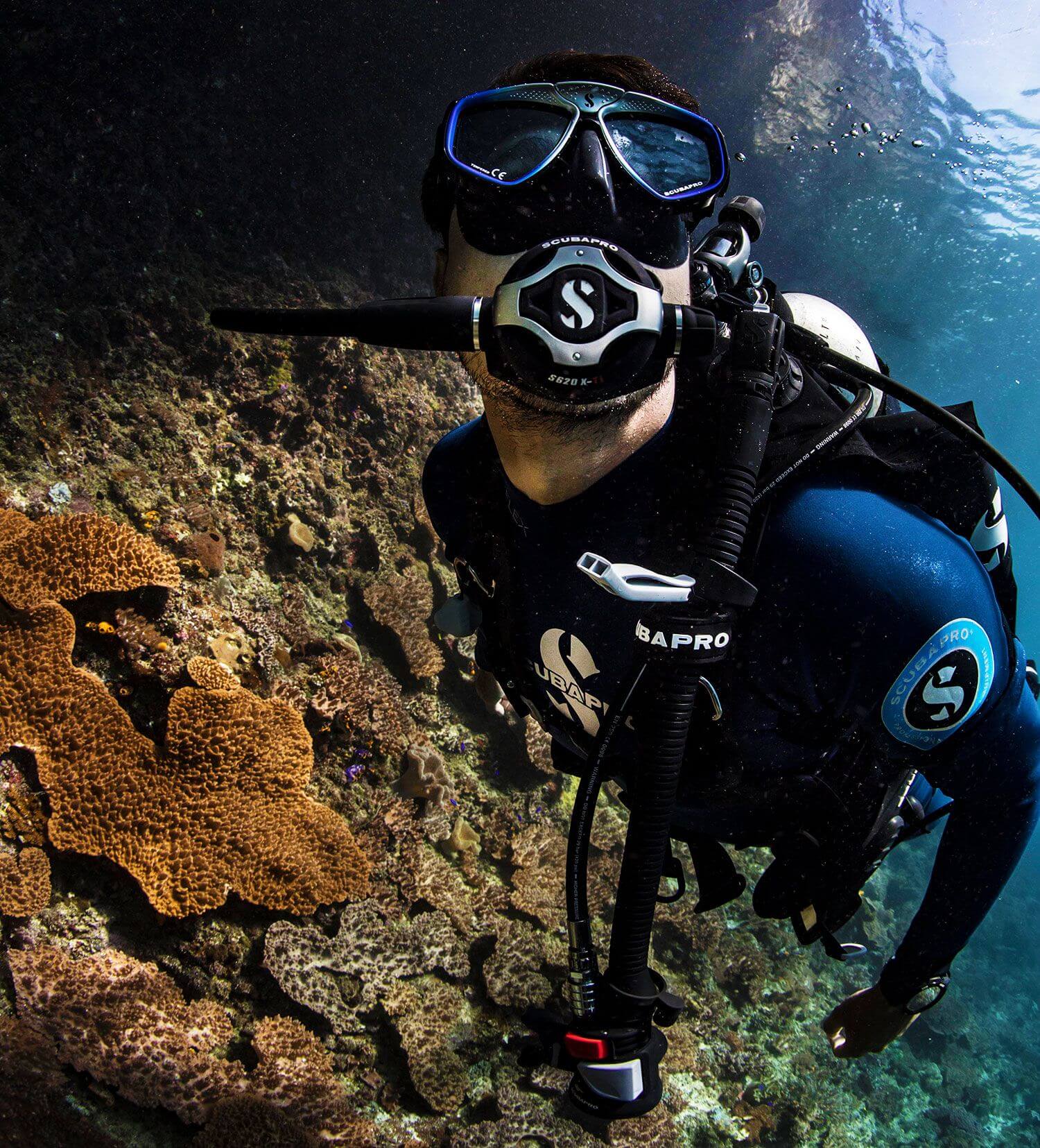
Step 2: Don’t Forget a Dive Computer
The personal dive computer has become a must-have piece of gear for all active divers. The dive computer’s ability to monitor depth and bottom time, track nitrogen loading, calculate decompression and more, makes diving safer, easier, and a lot more fun.
SCUBAPRO dive computers include feature-rich wristwatch-style and wrist-mount-style dive computers as well as console models. Whether you’re looking for a fully-loaded multi-gas, air-integrated computing powerhouse or an inexpensive back-up, there’s a SCUBAPRO dive computer perfect for the job.
Some examples include wristwatch-style computers like the A1; wrist-mount computers range from the no-frills Aladin Sport Matrix to the state-of-the-art, full color Galileo G2; or choose a console-style computer like the Aladin H Matrix or the new Galileo G2 Console (G2C). These computers offer a wide range of functions and features, each is a winner, test them out and find the style that works best for you.
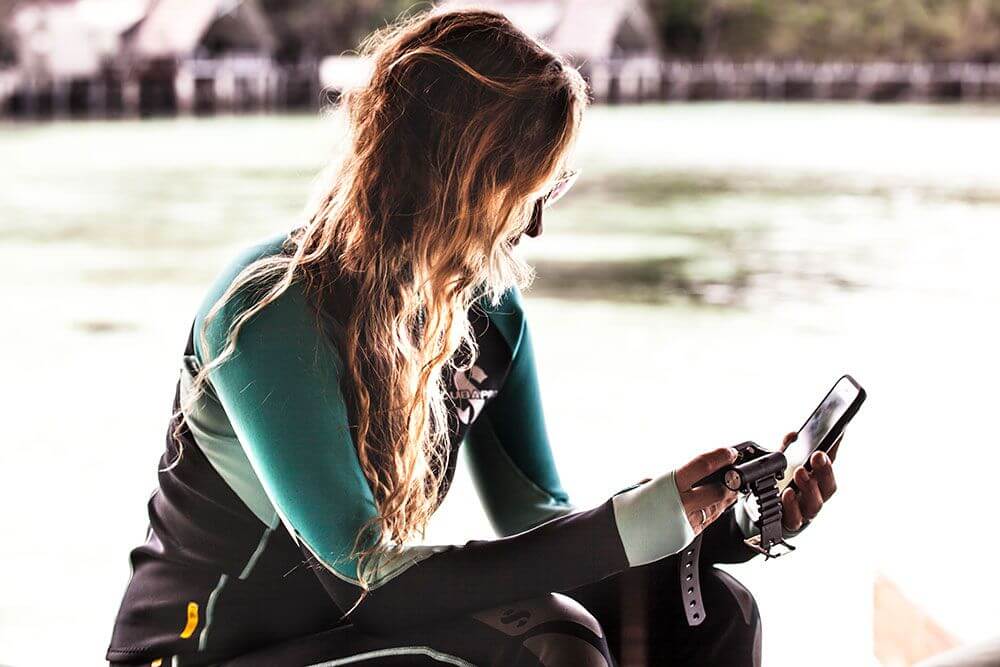
Step 3: Buoyancy and Ballast
The BCD is actually an easier piece of gear to rent, as long as you can get the right size. So it can probably wait until after you get your regulator system and computer. But eventually you’re going to want your own BCD. Why? Because while your regulator system contributes to your sense of security at depth, and a computer monitors your personal dive data, having your own BCD ties your whole kit together and makes your time under water just that much more fun. Diving consistently with the same style of BCD helps you improve your buoyancy control and helps you get streamlined in the water.
SCUBAPRO offers three types of BCDs: Back-Inflated, Front-Adjustable, and Stabilising Jacket. The type you choose depends entirely on personal preference.
Back-Inflated: With the air cell positioned behind you, front-body bulkiness disappears and hydro-drag is radically reduced. Compared to other BCD designs, this can feel like you’re diving with no equipment at all. Back-inflation BCDs also tend to naturally place you in the optimum swimming position at depth, and wearing one you will never suffer from body squeeze. Advanced divers, travel divers and photography models tend to be fans of back-inflated BCDs.
Front-Adjustable: A front-adjustable BCD lets you experience a sense of security that can transform your dive from one of trepidation to total self-assurance. With the air cells positioned under your arms and around your waist, front-adjustable BCDs literally embrace you. Stable both at depth and while floating on the surface, they are popular with new divers, experienced divers who dive infrequently, and divers who simply like the idea of being surrounded in comfort.
Stabilising Jackets: When SCUBAPRO unveiled the first stabilising jacket forty years ago, it revolutionised the BCD market. Providing unequaled stability, its unique design uses unrestricted internal passageways to allow air to flow throughout the jacket and accumulate at the highest point. At the surface, stabilising jackets provide a comfortable and relaxed face-up floating position. “Stab” jacket aficionados include dive instructors, technical divers, commercial divers and military divers.
What to Choose?
Before you choose a BCD you need to know where you’re going to use it. If you do all your diving in the tropics, you might want to go for a travel BCD like the Litehawk or GO. Travel BCDs are built light, pack easily, and offer less buoyant lift as well smaller ballast weight pouches.
If you do most of your diving locally, a more general-purpose BCD might be the ticket. These BCDs, like the Level, Seahawk 2 and Glide, as well as the Hydros Pro and Bella designed especially for women, are comfortable, offer lots of buoyant lift and ballast capacity and come with a number of convenience features.
Or, if you dive locally most of the time but like to sneak off on an occasional dive vacation, and you only want to own one BCD, a dual-purpose type BCD might be warranted – and there’s no better dual-purpose BCD on the market than the HYDROS PRO. A true breakthrough in dive comfort and convenience, its “2-BCDs-in-1” design includes both a fully integrated weight system for local diving plus quick-switch Trav-Tek straps for warm-water diving.
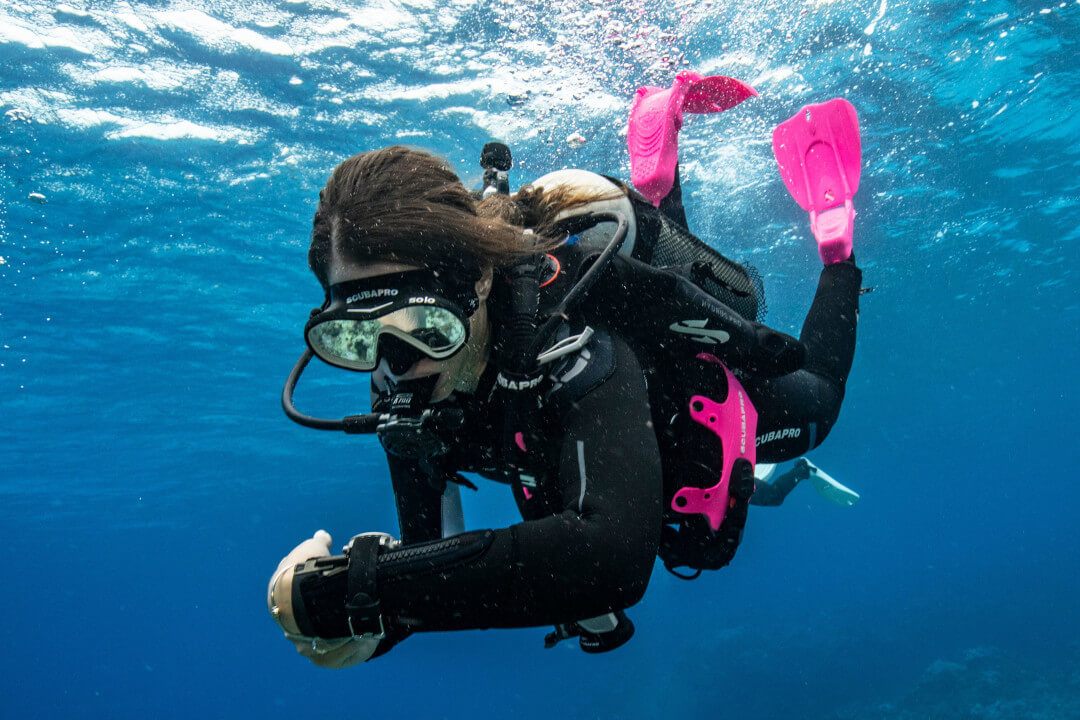
Step 4: Get Yourself a Suit
Rent a wetsuit that’s even a little too tight and it will not only be difficult to move around in the water, but you’ll probably also have trouble breathing. Rent a wetsuit that’s too loose and your teeth will be chattering from all the seawater sloshing around inside. Wetsuits also have different buoyancy characteristics, so every suit you rent will require a readjustment of your ballast weight. And let’s not even get into a rental suit’s cleanliness factor. No doubt, some Dive Wear should definitely be a priority item you want to have on your gear-buying list.
The ideal wetsuit should fit like a second skin; not too tight but free of gaps and folds that can trap air and pump water. It should also be flexible enough to stretch with your body for total comfort. SCUBAPRO offers 3 lines of wetsuits, one of which is sure to suit your skill level and type of diving.
For newer divers who might not be accustomed to wearing a wetsuit there’s the Sport. These wetsuits, available in 3mm, 5mm and 7mm, are inexpensive and extremely soft and flexible, making them super comfortable and great choices for new divers, casual divers, and first-time suit buyers who enjoy diving in moderate to shallow depths.
Occupying the mid-range is the Definition line, available in 3mm, 5mm and 7mm, built with special tailoring, an infrared inner lining, and a variety of comfort and convenience features. Definition suits are great for avid divers, virtually all diving depths and all diving scenarios.
And then there’s the flagship Everflex line of premium wetsuits, built with 100% Everflex neoprene with multi-thickness panels in 3/2mm, 5/4mm and 7/5mm. Delivering superior warmth and flexibility, plus first-class YKK zippers, Diamond Span inner linings, and a long list of extra features, these wetsuits represent the top-of-the-line in thermal protection.
If you are diving in warm water or don't like to wear wetsuits I'd check out the UPF Rashguards to add a layer of protection for you skin from both the sun and environmental exposure.
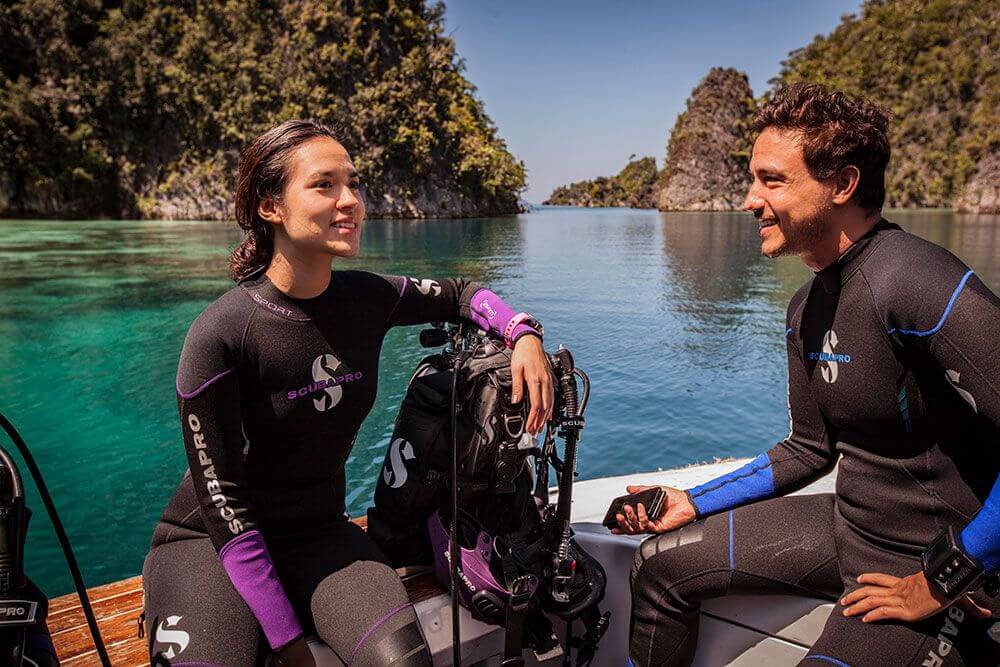
Step 5: Somewhere Down the Road
As you log more bottom time and you get a better sense of the kind of diver you are destined to become, you’ll probably want to upgrade your gear. Accessorising is one of the best ways to make your kit uniquely yours. From colour kits, to dive knives, lights and bags to hold all of your gear, the options are endless.
If you plan to do a lot of local diving you might want to invest in a cylinder. However, a cylinder is the easiest piece of gear to rent, and it always comes topped off with gas which you’ll need to get anyway, so that would probably be one of your last buys.
Bottom line: Divers who are familiar with their gear tend to be the most comfortable in the water, and being comfortable in the water is the fastest way to become one of those people who feels more at home 20 meters deep than standing on shore. The more time you spend in the water, using your own gear, the better diver you will be, and the more you’ll enjoy your diving.
Happy Diving!
